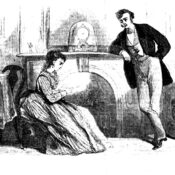With the help of Mayor Fiorello La Guardia, Maurice Zolotow, known more for his Broadway and Hollywood articles than transportation, describes how rapid transit came to define New York City in this excerpt from a 1945 article in the Post.
[See also: “The Looming Crisis in Mass Transit” from our Jul/Aug 2012 issue.]
Manhattan’s Daily Riot
March 10, 1945—Anything and everybody can happen on the subway in New York. Like the Bowery in the old song, the subway is today the place where they do strange things and they say strange things.
For the visitor, the subway is a bewildering experience. His eyes will be confused by the murky yellowish dimness. His ears will be racked by the crashing, clashing, grating cacophony of the trains grinding against the tracks, a noise that is magnified into thunderous reverberations by the low tunnels.
But millions of New Yorkers stolidly ride the subway to and from their jobs, and they travel—many of them standing up—an average of eighty minutes a day. The New Yorker would be perplexed if the noise and the mobs were to vanish.
As Mayor La Guardia puts it, “New York didn’t build the subways. The subways built New York.” Then he tells you that Queens was just a cow country until the subway system was extended there, and that suddenly the population quadrupled, real-estate values boomed, small civic centers grew up around each subway station, schools were built and paving laid, and apartment houses and stores and churches sprang up.
When the IRT [Interborough Rapid Transit], first of the New York subways, opened in 1904, New Yorkers greeted the new vehicles with a mixture of enthusiasm, curiosity, and fear. A hundred thousand passengers rode the IRT on opening day, and many uproariously traveled back and forth all day, just for sheer pleasure.
 La Guardia sits in his office in City Hall and smiles gently when you ask him about crowds in the subway during rush hour. He has been a subway rider himself for a long time. He points to a wall map of New York City. The map is veined by the subway lines. The mayor leans back in his chair and darts his fingers at the map.
La Guardia sits in his office in City Hall and smiles gently when you ask him about crowds in the subway during rush hour. He has been a subway rider himself for a long time. He points to a wall map of New York City. The map is veined by the subway lines. The mayor leans back in his chair and darts his fingers at the map.
“Let me tell you this,” he says:
“Any time we don’t have crowding during the rush hour, there’ll be a receiver sitting in the mayor’s chair and New York will be a ghost town. Why, they talk about the rush hours and the crush and the noise! Why, listen, don’t you see that’s the proof of our life and vitality? Why—why, that is New York City.”
Become a Saturday Evening Post member and enjoy unlimited access. Subscribe now




